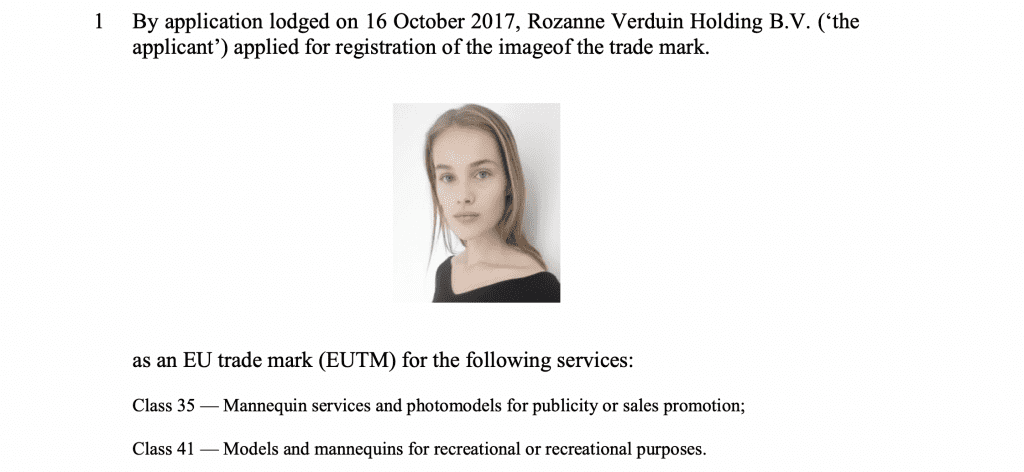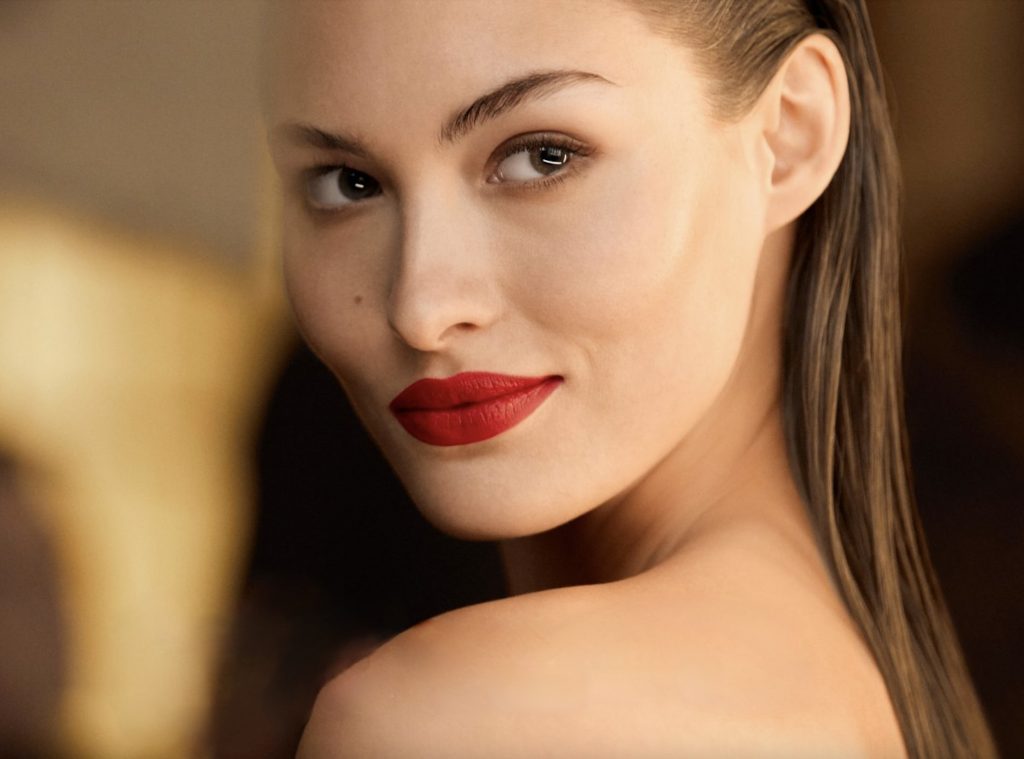Grace Elizabeth Harry Cabe (“Grace Elizabeth”) is suing Revlon for allegedly using her photo to advertise its makeup without obtaining her permission to do so. In the complaint that she filed in a New York federal court on July 24, the widely-known model claims that beginning in April 2020, the New York-headquartered makeup giant published a photo of her to its Instagram and Facebook pages “in order to promote, market and brand REVLON products, including without limitation, [its] Skinlights Prismatic Bronzer.” The problem with that, per Grace Elizabeth, is that she did not sign off on such commercial use of her image and likeness.
According to the newly-filed complaint, which was first reported by Bloomberg, the photo at issue is one that Elizabeth Grace alleges “was originally created by photographer Michael Schwartz for a January 2017 editorial in Vogue Mexico,” and in which she is “not wearing the advertised ‘Revlon’ brand products,” but is, instead, wearing Marc Jacobs makeup products. Nonetheless, the model – who has “more Instagram followers than Kate, Moss, former REVLON models Christy Turlington and Iman Abdulmajid, and 2018 REVLON models Imaan Hammam and Adwoa Aboah” – claims that Revlon used her image and likeness to “promote, market and brand” its products on a number of “different dates, and on different and additional social media accounts.”
24-year old Elizabeth Grace asserts that Revlon’s unauthorized use of her image and likeness is problematic for a number of reasons, including because she has previously turned down an offer from the company, which had “sought the use of [her] image in connection with its 2018 ‘Live Boldly’ campaign.” Elizabeth Grace claims that she rejected Revlon’s 2018 offer, as she had already entered into an exclusive contract with Estée Lauder in 2017, thereby, barring her from appearing in ad campaigns for rival cosmetics companies. Against that background, Grace Elizabeth – who has appeared in campaigns for Chanel, Versace, Victoria’s Secret, Tory Burch, Zara, and Carolina Herrera, among others – claims that Revlon’s uses of her image “were in contravention with the exclusive terms of” her existing deal with Estée Lauder.
More than that, the model argues that Revlon’s use of her image runs afoul of the law because it could create confusion regarding her “endorsement of Revlon and Revlon’s products,” her “business relationship with Revlon or Estée Lauder,” and “the makeup [that she is wearing] in the image published by Revlon,” namely by “falsely imply that [she] is wearing Revlon makeup.”
Such unauthorized use of her image by Revlon is also particularly striking, Grace Elizabeth argues, as “Revlon has had procedures and protocols in place for over 60 years for securing publicity/privacy rights of persons used to brand, promote, market, advertise and sell its products.” Nonetheless, despite having “some six decades of practice, and entering into such contracts with approximately 100 models and/or celebrities,” including major models and celebrities like Christie Brinkley, Bassinger, Liza Minelli, Cindy Crawford, Brooke Shields, and Lauren Hutton, among others, Grace Elizabeth asserts that “Revlon ignored its own protocols and used [her] image, despite her rejection of working with Revlon.”
Still yet, Revlon’s unauthorized use of her image and likeness is made even worse, Grace Elizabeth asserts in light of the fact that “beauty companies, such as Revlon, are often defined by their spokesmodels,” and Revlon, in particular, is “closely associated with the models it uses in its advertisements.” And finally, Grace Elizabeth argues that the use is damaging because her livelihood as a professional model is based exclusively on her ability to earn “considerable sums in exchange for the use of her image, portrait, likeness or name in connection with the sale or promotion of products or services with which [she] has elected to associate herself with on terms and conditions agreeable to her.”
With the foregoing in mind, and given that the parties have allegedly been unable to resolve the matter out of court, Elizabeth Grace claims that Revlon violated New York Civil Rights Law and the Lanham Act by using her “image, likeness and/or name” without her authorization and “intentionally trad[ing] on her fame, beauty, reputation and talent as a model.” The model is seeking monetary damages in an amount to be determined at trial, and injunctive relief to permanently bar Revlon “from employing or utilizing in any manner or media whatsoever, including all future uses, sales, transfers, assignments, or licensing of any and all of products, advertisements, or any other publication, bearing [her] name, portrait, photograph, image likeness, or persona.”
Models’ Marks
The case comes as no shortage of models have successfully sought trademark applications for registration – albeit, not for their names, but for photos of themselves for use on services in trademark Class 35 (“publicity services provided via modeling; sales promotion services and demonstration of goods provided via models and mannequins”) and Class 41 (“entertainment services, namely, fashion modeling”). Dutch model Rozanne Verduin, for instance, was granted a registration for a portrait mark in May 2020 by the U.S. Patent and Trademark Office. Becoming celebrities in their own right, thanks, in large part to their large followings on social media, other models, such as Doutzen Kroes, Yasmin Wijnaldum, Maartje Verhoef, and Marjan Jonkman, have also sought similar registrations.

More recently, the European Union Intellectual Property Office (“EUIPO”)’s Board of Appeal sided with Verduin in connection with an EU-specific filing for the same portrait mark, and overturned an earlier decision from the EUIPO, which determined that the applied-for mark was devoid of any distinctive character with respect of the services at issue, and that the relevant public would not view the portrait as an indication of the source of the services, and thus, the mark would not serve to distinguish Verduin’s services from those of others.
In a decision issued on May 19, 2021, the Board of Appeal for the EUIPO enabled Verduin’s application to go forward in the registration process. The Board shot down the earlier finding by the EUIPO, holding that “in addition to the fact that the human face of an adult is a distinguishing sign, Rozanne Verduin … is a well-known person in the fashion world for design services, [and] as an international catwalk and commercial model.” As such, the model’s face “is the mark and, with its success, it has built up a popularity and reputation, which gives sufficient grounds for registration of the portrait as a trademark.”
Distinguishing its decision from that of the EUIPO examiner, the Board stated that “it is not necessary for the trademark to convey exact information about the identity of the manufacturer of the goods or the supplier of the services.” Instead, it is “sufficient that the mark enables the relevant public to distinguish the product or service designated by it from goods or services having a different commercial origin.” As such, it stated that “as long as the representation which is the subject matter of the mark applied for” – i.e., the portrait of Verduin – “is recognizable and unique in itself, it may serve as a sign of origin.”
As for the services at issue, namely, modeling services, the EUIPO’s board held that “it is not unusual for them to be offered with the image of the person providing those services, such as a model.”
Reflecting on the Board’s finding, Novagraaf attorney Koen de Winder says that the Board’s conclusion “prevented a break from previous rulings that a person’s image can be registered as a trademark.” He notes that the decision that “an image can fulfil requirements for distinctive character offers individuals the possibility to protect their portraits as trademarks in the EU, and thereby, take action against third parties who use them without their permission.”
The case is Grace Elizabeth Harry Cabe v. Revlon Consumer Products Corporation, and Revlon, Inc., 1:21-cv-06300 (SDNY).











